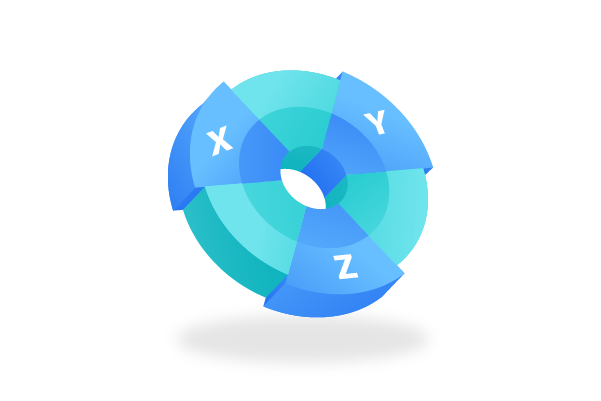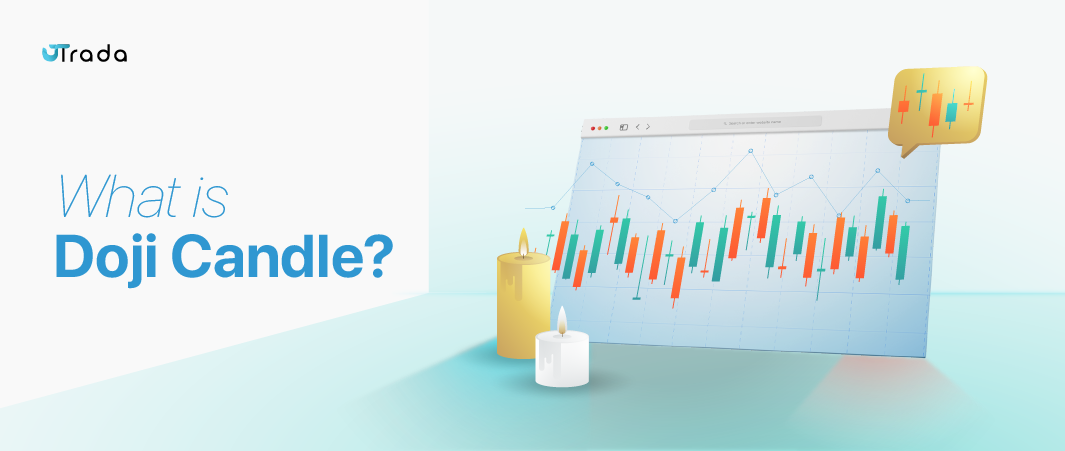Candlestick charts are a type of financial chart used to describe price movements of a security, derivative, or currency. Each “candlestick” typically shows one day, though different time periods can be represented. Candlestick charts are a popular choice among traders because they provide more information than a simple line chart. Each candlestick shows the open, high, low, and close prices for the period.
A Doji candle is a specific type of candlestick pattern that signifies indecision in the market. It is characterized by a very small body, where the opening and closing prices are nearly equal. The length of the shadows can vary, and the position of the Doji candle within a trend can provide different insights.
The concept of Doji candles originates from Japanese rice trading, dating back to the 18th century. Munehisa Homma, a Japanese rice trader, is credited with the development of candlestick charting techniques. Doji candles, among other patterns, were used to predict future price movements based on historical price action.
Table of Contents
ToggleCharacteristics of a Doji Candle

A Doji candle is unique among candlestick patterns due to its distinctive structure, which reflects a state of indecision in the market. Here are the key characteristics that define a Doji candle:
Anatomy of a Doji Candle
The anatomy of a Doji candle consists of the following elements:
- Body: The body of the Doji candle is extremely small, often appearing as a thin line. This indicates that the opening and closing prices are nearly identical, showing a lack of decisive movement in either direction.
- Shadows (Wicks): The shadows, or wicks, extend above and below the body. These shadows can vary in length, representing the highest and lowest prices during the period. The variation in shadow lengths helps identify the specific type of Doji candle.
Read More: What Is a Cross-Currency Swap? A Guide for Beginners
Key Features and Identifiers
- Opening and Closing Prices: For a candle to be classified as a Doji, the opening and closing prices must be very close to each other, often within a few ticks. This creates the visual effect of a small or non-existent body.
- Upper and Lower Shadows: The shadows on either side of the body represent the range of price movement during the period. The presence of long shadows can indicate significant volatility within the period, even though the opening and closing prices remained the same.
- Indecision Indicator: A Doji candle is a clear indicator of indecision among traders. Neither buyers nor sellers could gain control during the period, leading to a stalemate reflected in the nearly identical open and close prices.
Understanding these characteristics is crucial for traders who rely on technical analysis. The appearance of a Doji candle can signal a potential reversal or continuation of the trend, depending on its context within the larger price movement.
Types of Doji Candles

Doji candles come in various forms, each with its unique implications for market behavior. Understanding the different types of Doji candles can help traders interpret market conditions more accurately. Here are the primary types of Doji candles:
Long-Legged Doji
A Long-Legged Doji is characterized by long upper and lower shadows, which indicate significant price movement above and below the opening and closing prices during the period. The long shadows suggest that both buyers and sellers were active, but neither side could maintain control, resulting in a close near the open.
This pattern reflects a day of intense volatility, where the market participants are indecisive, and the forces of supply and demand are in equilibrium by the end of the trading session.
The visual structure of the Long-Legged Doji makes it one of the most recognizable candlestick patterns. Its appearance can be seen as a harbinger of change, often prompting traders to prepare for potential shifts in the market trend. The pattern indicates that, despite the day’s price action, the market sentiment remains uncertain, and the balance between buying and selling pressure is finely poised.
The Long-Legged Doji signifies high market volatility and indecision. It often appears at market tops and bottoms and can signal a potential reversal in trend. For traders, the Long-Legged Doji is a warning sign that the current trend may be losing momentum, and a reversal could be imminent. However, traders should look for confirmation in subsequent candles to determine the next move. A confirmed reversal would typically be indicated by a strong candlestick pattern in the opposite direction of the prevailing trend following the Long-Legged Doji.
In practice, the Long-Legged Doji can be an essential tool for traders seeking to identify entry and exit points. Its presence in a chart requires careful analysis of the surrounding price action and volume. While the Long-Legged Doji alone does not provide a definitive trading signal, its appearance, combined with other technical indicators, can help traders make more informed decisions about their positions.
Gravestone Doji
The Gravestone Doji features a long upper shadow with little to no lower shadow, and the opening and closing prices are at or near the low of the period. This pattern resembles a gravestone, hence the name. The Gravestone Doji indicates that buyers were able to push prices significantly higher during the trading period, but by the close, sellers had regained control and forced the price back down to the opening level. This strong rejection of higher prices suggests a shift in market sentiment from bullish to bearish.
The visual formation of the Gravestone Doji makes it particularly useful in identifying potential tops in the market. It serves as a graphical representation of the battle between buyers and sellers, where the latter ultimately emerge victorious by the end of the trading session. This pattern can occur at the peak of an uptrend or after a brief rally in a downtrend, signaling the exhaustion of buying pressure.
The Gravestone Doji typically appears at the top of an uptrend and signals a potential bearish reversal. It indicates that buyers pushed prices higher during the period, but sellers regained control, driving prices back down to the opening level. The pattern’s implications are especially significant when it forms after a prolonged uptrend, as it suggests that the upward momentum is weakening, and a downturn may be imminent. Traders should look for confirmation from the next candle to validate the bearish signal, which is typically seen as a strong bearish candlestick following the Gravestone Doji.
Incorporating the Gravestone Doji into a broader trading strategy requires an understanding of its context within the overall price action. When combined with other technical indicators, such as volume analysis or trend lines, the Gravestone Doji can provide a clearer picture of potential market reversals. Traders should be cautious, however, as the Gravestone Doji, like all candlestick patterns, is not foolproof and should be used in conjunction with other analytical tools.
Dragonfly Doji
The Dragonfly Doji is the opposite of the Gravestone Doji. It has a long lower shadow with little to no upper shadow, and the opening and closing prices are at or near the high of the period. This pattern looks like a dragonfly with outspread wings, hence the name.
The Dragonfly Doji indicates that sellers dominated the market for most of the period, driving prices down significantly, but by the close, buyers had stepped in and pushed prices back up to the opening level. This recovery suggests a shift in market sentiment from bearish to bullish.
The formation of the Dragonfly Doji is a visual representation of market resilience, where initial selling pressure is met with strong buying interest. This pattern often occurs at the end of a downtrend or during periods of market consolidation, signaling a potential reversal. The Dragonfly Doji is particularly valuable in identifying bottoms and potential bullish turnarounds.
The Dragonfly Doji typically appears at the bottom of a downtrend and signals a potential bullish reversal. It shows that sellers drove prices down during the period, but buyers managed to push them back up to the opening level. This pattern’s appearance indicates that the downward momentum is losing strength, and a bullish reversal could be on the horizon. As with other Doji patterns, traders should seek confirmation from the next candle to validate the bullish reversal, typically seen as a strong bullish candlestick following the Dragonfly Doji.
In trading, the Dragonfly Doji can serve as an early indicator of a trend reversal, allowing traders to position themselves for potential gains. Its effectiveness is enhanced when observed in conjunction with other technical indicators, such as support and resistance levels or momentum oscillators. By understanding the market dynamics represented by the Dragonfly Doji, traders can better anticipate changes in price direction and make more informed trading decisions.
Four-Price Doji
The Four-Price Doji is a rare pattern where the open, high, low, and close prices are all the same or nearly identical, resulting in a horizontal line with no shadows. This pattern indicates extreme indecision in the market, where no significant price movement occurs during the trading period. The Four-Price Doji reflects a complete balance between supply and demand, with neither buyers nor sellers gaining the upper hand.
The visual simplicity of the Four-Price Doji belies its significance as a marker of market stasis. It is most commonly found in thinly traded markets or during periods of low liquidity, such as after-hours trading sessions or holiday periods. While its occurrence is infrequent, the Four-Price Doji serves as a clear signal of market indecision and a potential precursor to increased volatility.
The Four-Price Doji signifies a complete lack of volatility and trading activity. It usually appears in thinly traded markets or during times of low liquidity. While its predictive power is limited compared to other Doji patterns, the Four-Price Doji still indicates a pause in market movement. Its presence suggests that traders should be cautious, as the market could be poised for a significant move once trading activity resumes.
In practice, the Four-Price Doji’s appearance should prompt traders to closely monitor the market for signs of emerging trends or shifts in momentum. While the pattern itself does not provide a clear directional signal, it underscores the importance of being prepared for potential market changes. By understanding the conditions that give rise to the Four-Price Doji, traders can better navigate periods of low activity and anticipate future price movements.
Understanding these different types of Doji candles helps traders better interpret market signals and make informed decisions. Each type provides unique insights into market sentiment and potential future movements.
Significance of Doji Candles in Trading

Doji candles hold significant value in technical analysis and trading due to their ability to signal potential changes in market sentiment. Their unique structure and the indecision they represent make them powerful indicators for traders seeking to understand market dynamics and predict future price movements. Here are the key aspects of their significance:
In technical analysis, Doji candles are considered critical indicators of market psychology. They reflect a period where neither buyers nor sellers have the upper hand, leading to a standoff in price movement. This balance can often precede significant market moves, making Doji candles a valuable tool for predicting reversals or continuations in trend. Technical analysts use Doji candles to identify potential turning points in the market, providing opportunities to enter or exit positions.
Read next: Forex Investment: The Meaning, Key Features and Strategies in 2024
Doji candles are also integral to various technical analysis strategies. They often appear in conjunction with other patterns and indicators, such as support and resistance levels, moving averages, and volume analysis. By incorporating Doji candles into these broader strategies, traders can enhance their ability to predict market behavior and make more informed decisions. The Doji’s role as a harbinger of change makes it a staple in the toolkit of technical analysts.
Conclusion
Doji candles are a vital component of technical analysis, providing traders with valuable insights into market sentiment and potential future price movements. Their unique structure, characterized by a small body and nearly equal opening and closing prices, signifies a period of indecision in the market. This period of equilibrium between buyers and sellers often precedes significant changes in market direction, making Doji candles powerful tools for predicting reversals or continuations of trends.
Understanding the different types of Doji candles—such as the Long-Legged Doji, Gravestone Doji, Dragonfly Doji, and Four-Price Doji—enhances a trader’s ability to interpret market conditions accurately. Each type offers distinct implications based on its formation and position within the broader trend. By recognizing these patterns and their market implications, traders can better anticipate potential turning points and adjust their strategies accordingly.
The significance of Doji candles extends beyond their individual patterns. When integrated into a comprehensive technical analysis approach, Doji candles can provide critical context for other indicators and patterns. They are instrumental in identifying periods of market consolidation, potential trend reversals, and moments of high volatility. Their presence in a candlestick chart prompts traders to pay closer attention to subsequent price action, looking for confirmation signals that can validate the anticipated market move.
In practice, the effective use of Doji candles requires a nuanced understanding of market dynamics and a willingness to look beyond the surface. Traders must consider the broader context of price movements, including volume, support and resistance levels, and other technical indicators. By doing so, they can leverage the subtle but powerful signals provided by Doji candles to make more informed trading decisions.
Disclaimer: The information provided by Utrada in this article is intended for general informational purposes and does not reflect the company’s opinion. It is not intended as investment advice or recommendations. Readers are strongly advised to conduct their own thorough research and consult with a qualified financial advisor before making any financial decisions.
Carina Caringal is an experienced writer and analyst in the Crypto and Blockchain world, with four years of expertise. She simplifies the complex world of Digital Currencies for her readers, offering clear insights and updates on the latest trends and technologies.
-
Carinahttps://utrada.com/blog/author/carina/
-
Carinahttps://utrada.com/blog/author/carina/
-
Carinahttps://utrada.com/blog/author/carina/
-
Carinahttps://utrada.com/blog/author/carina/


